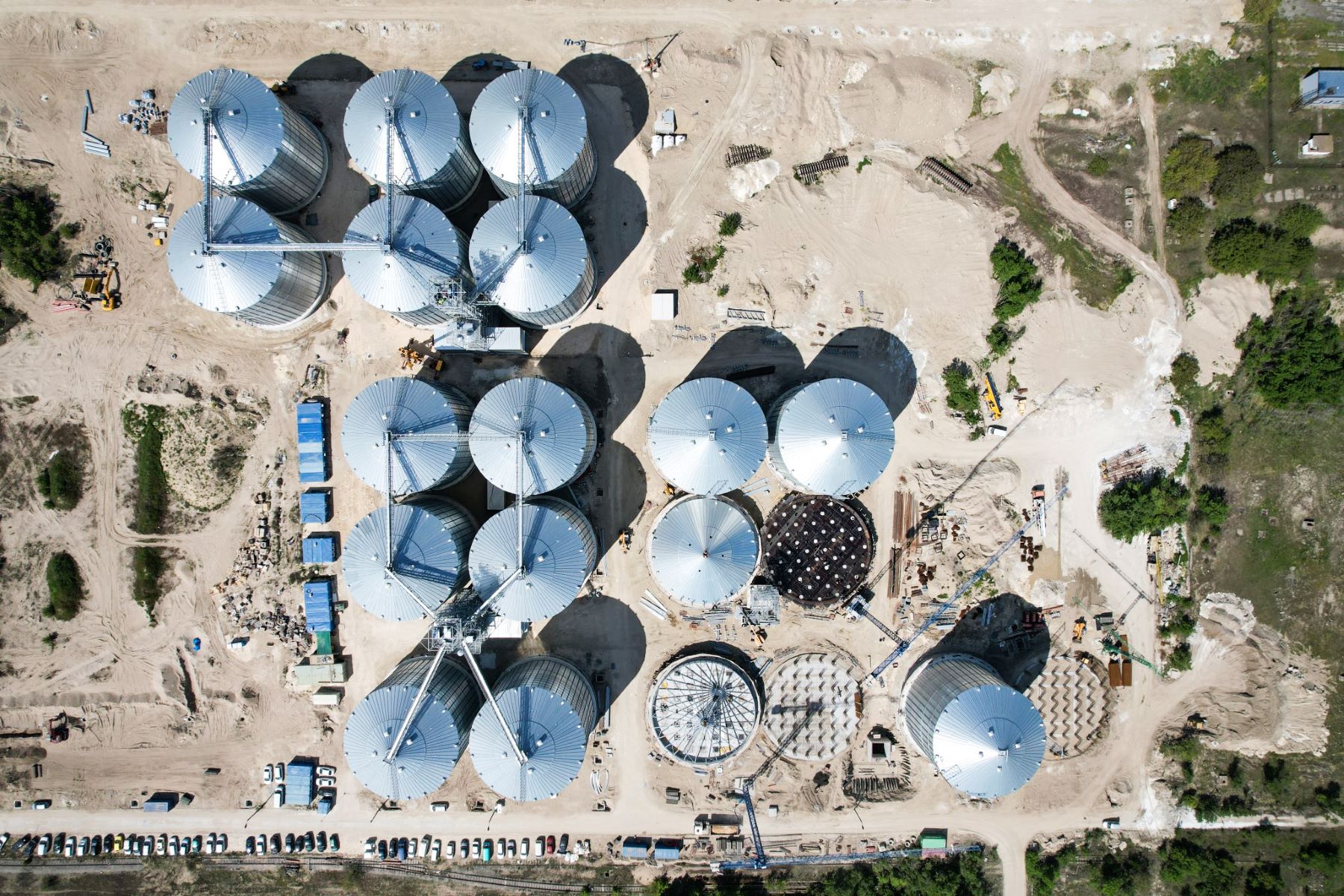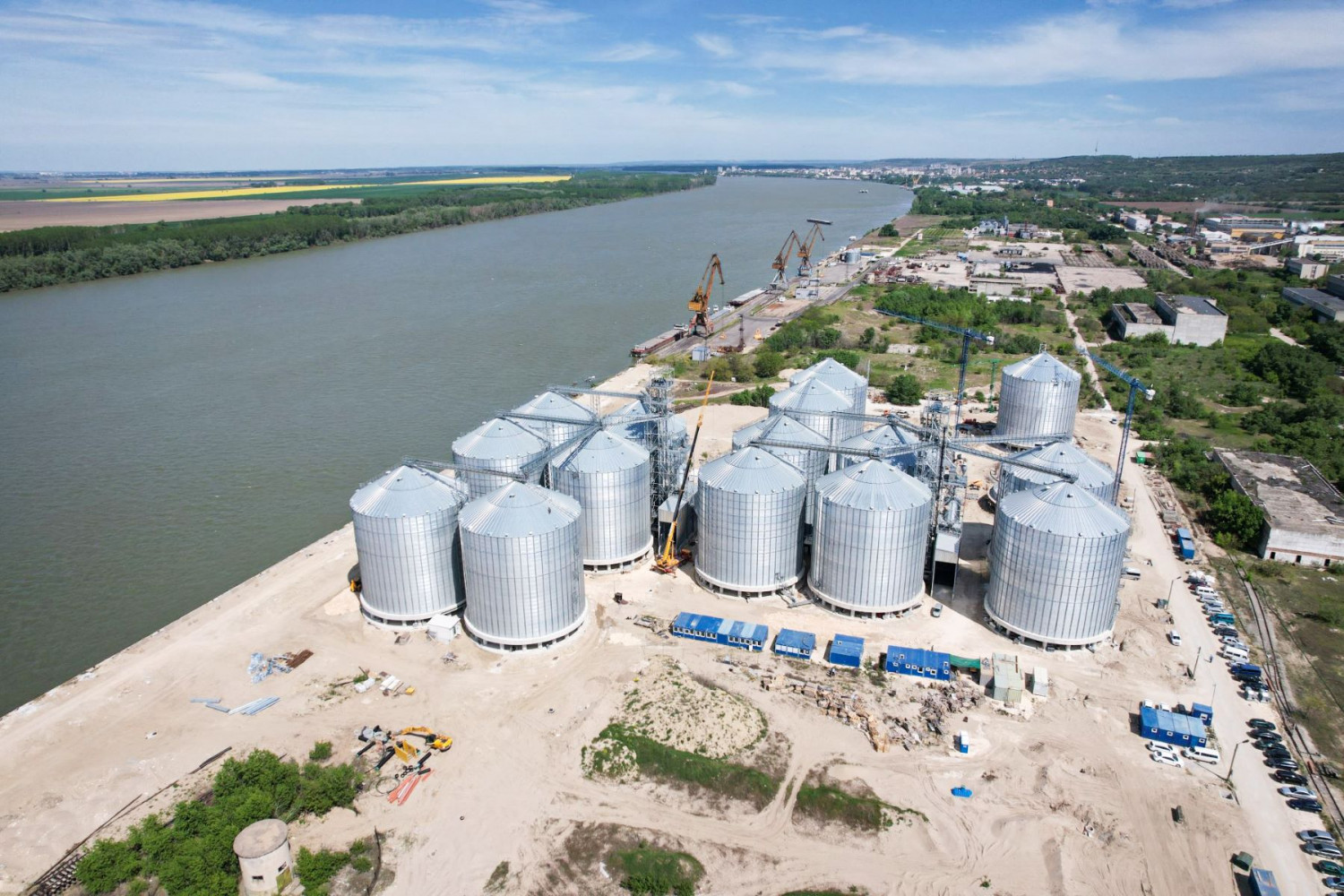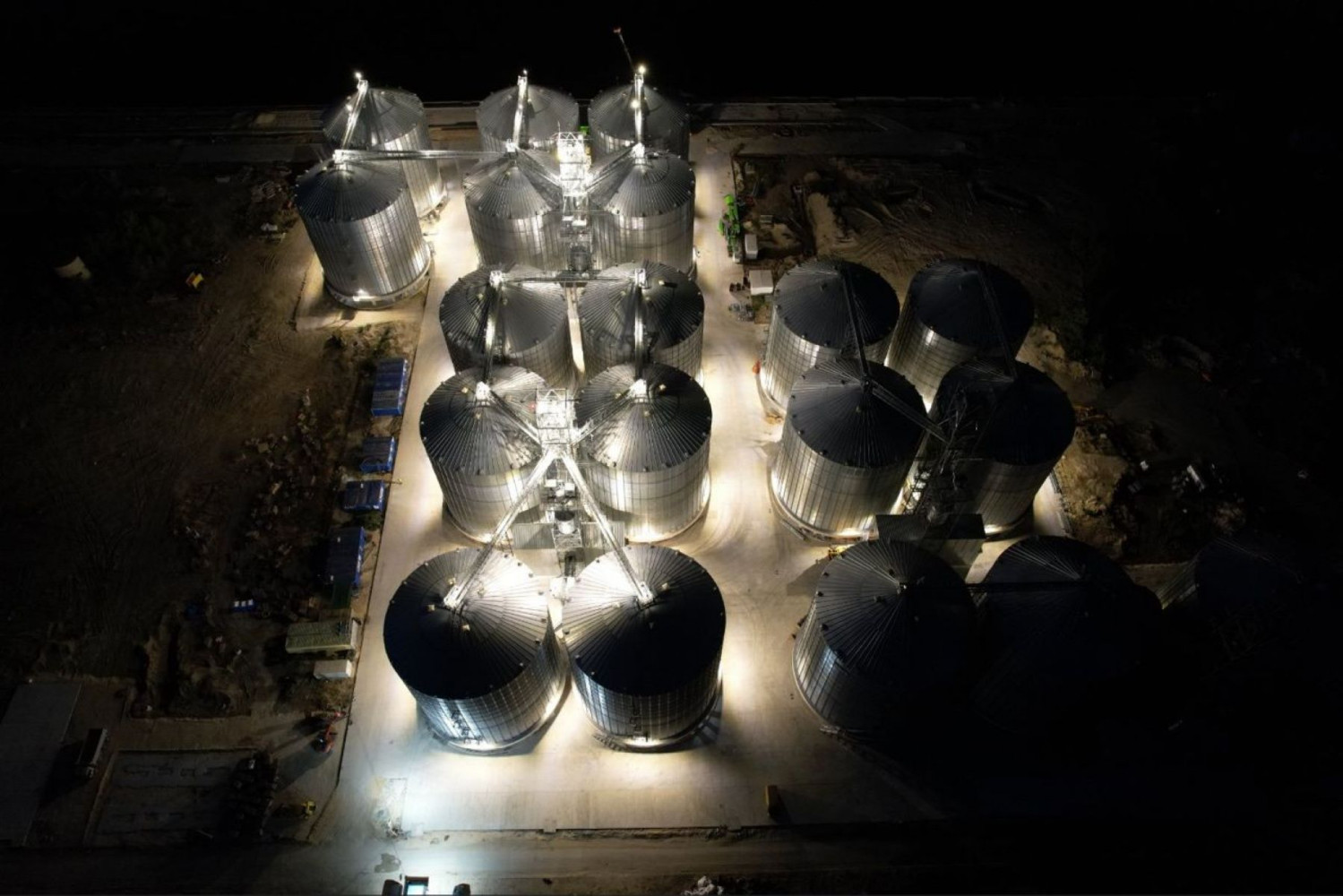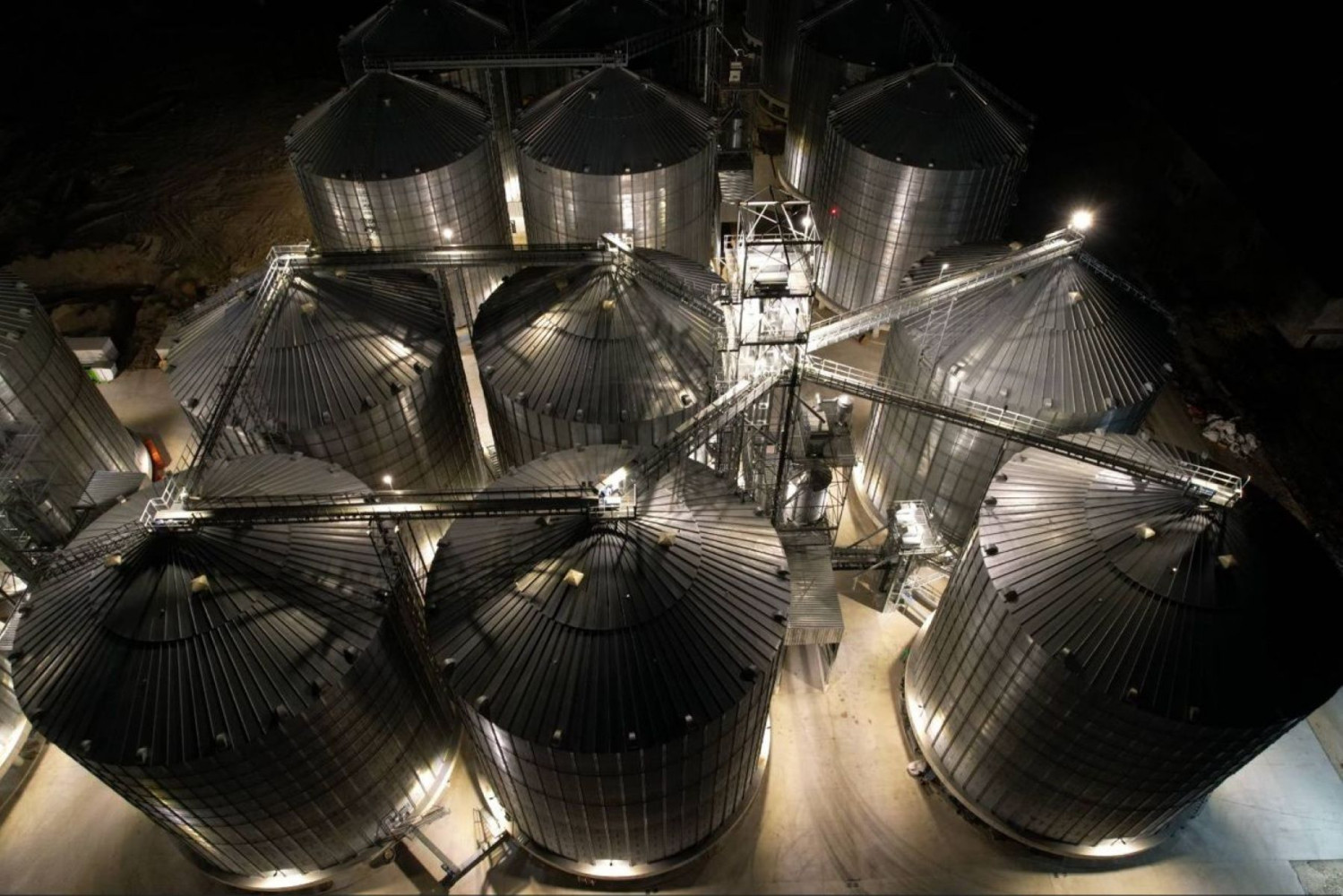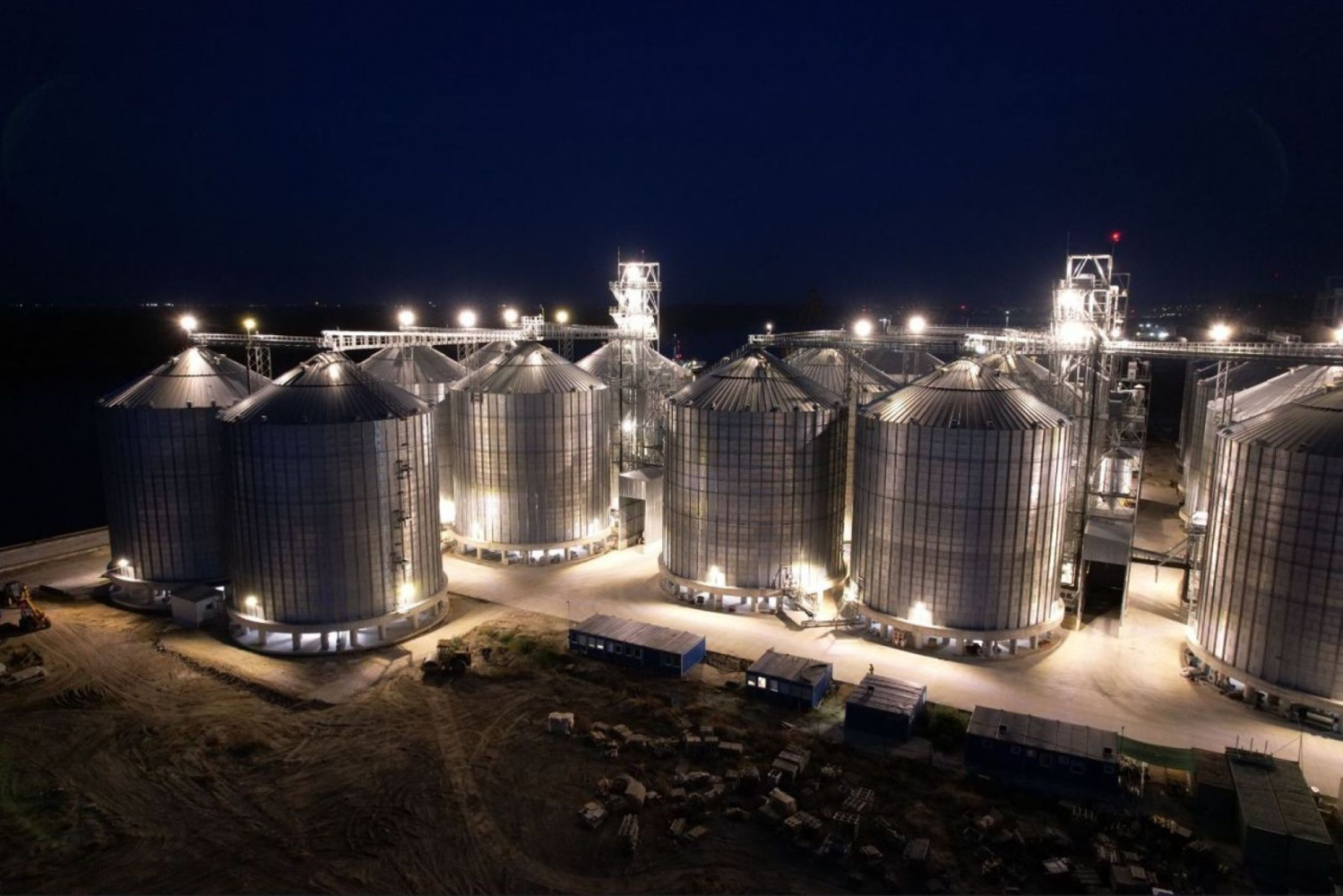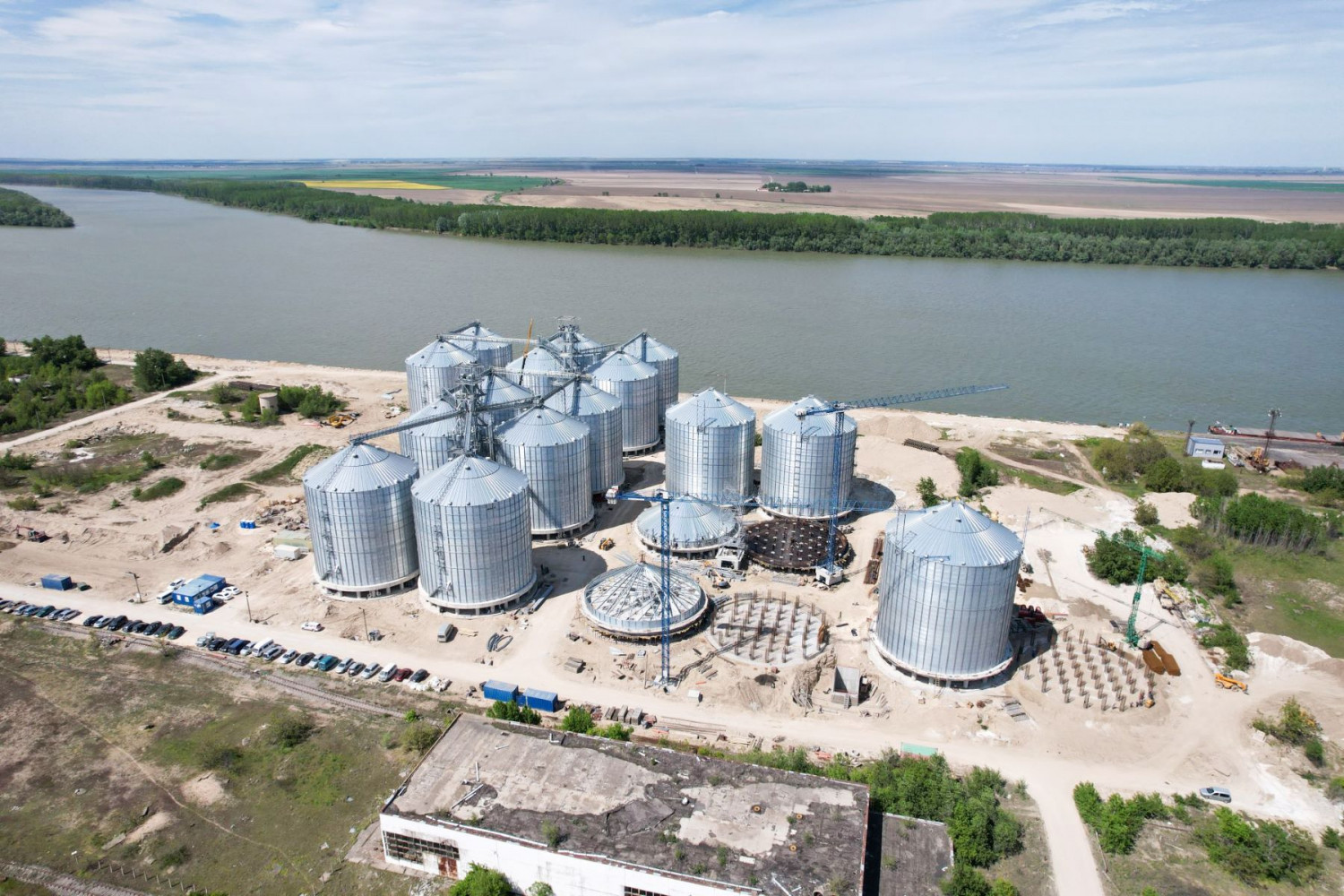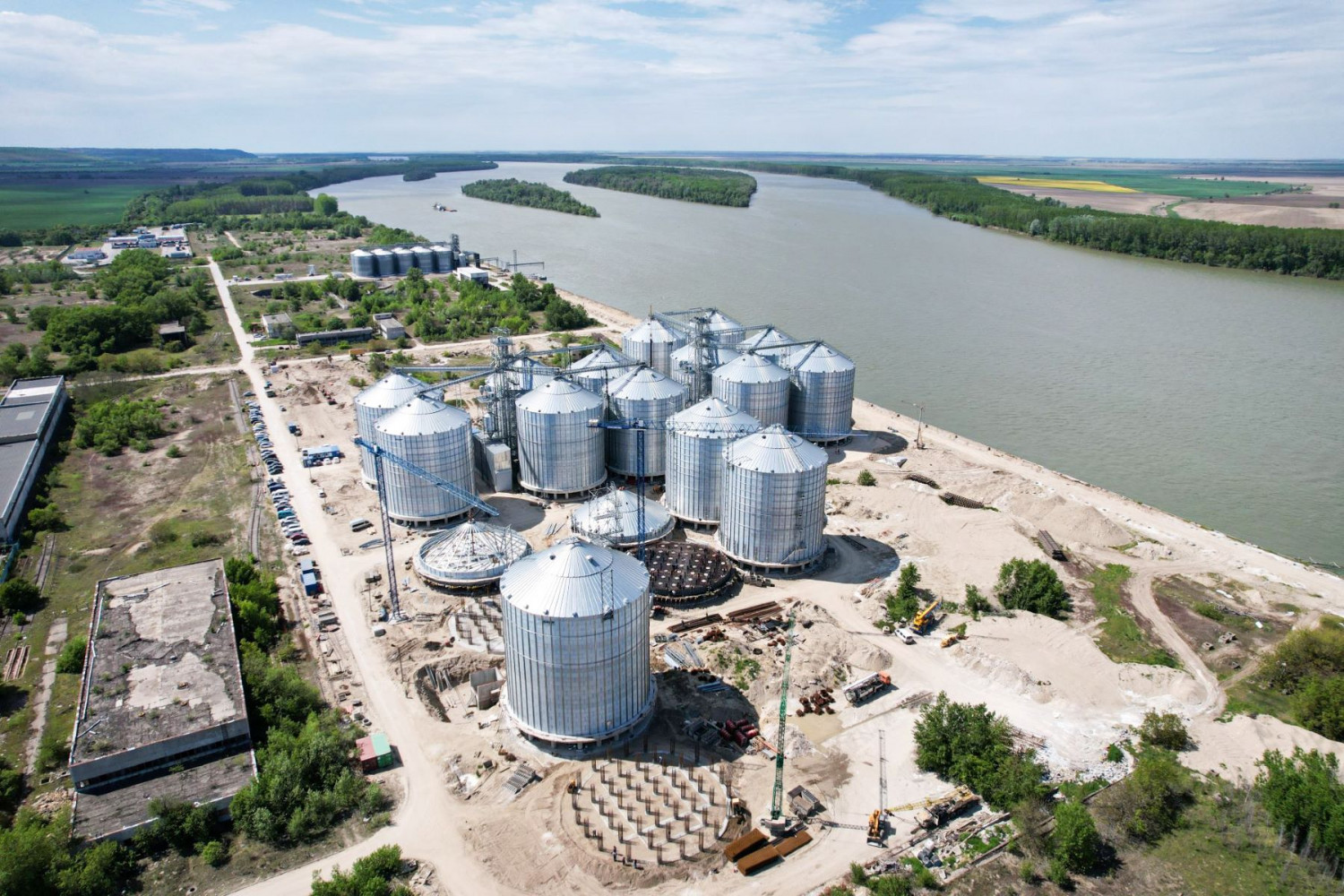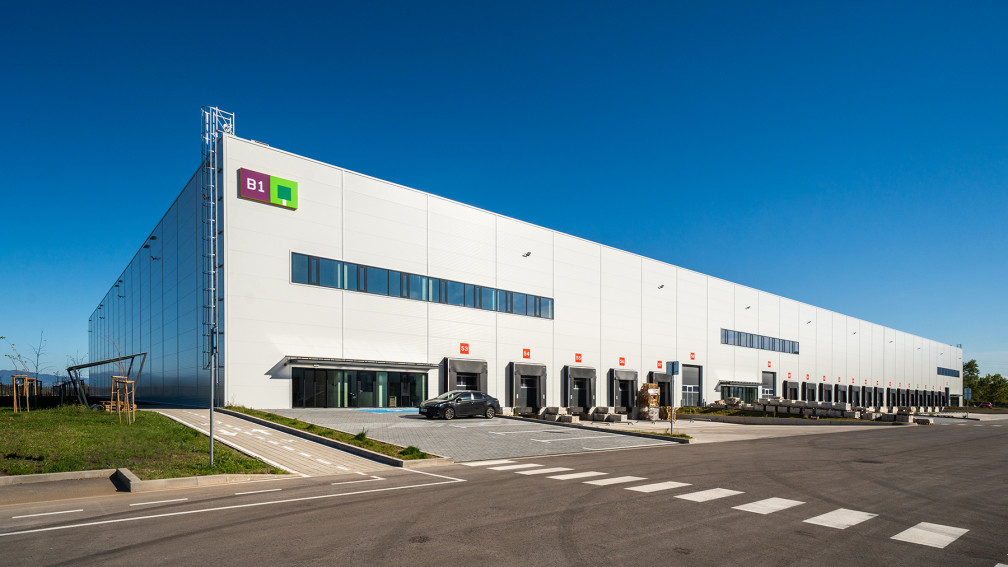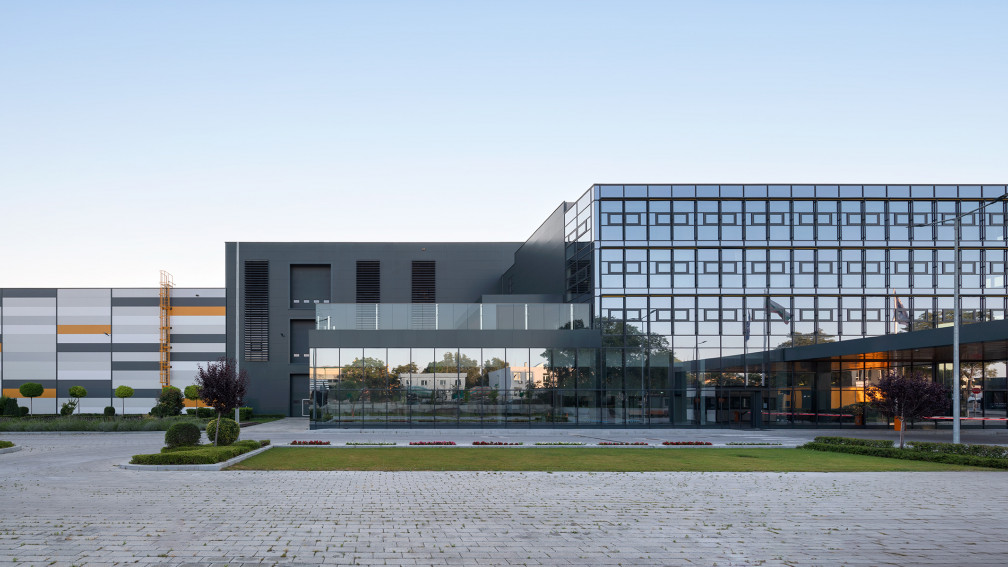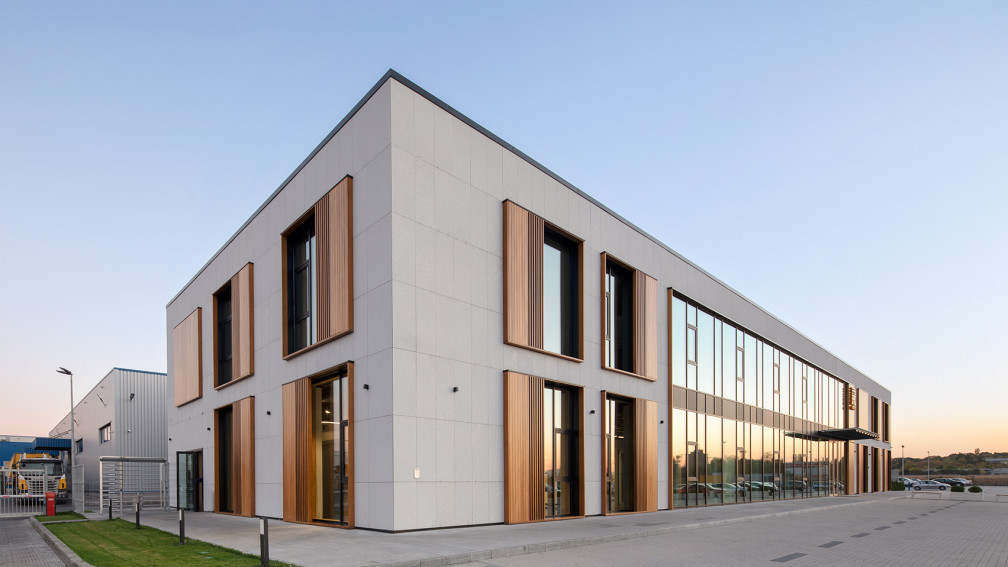IPA has successfully designed and constructed silo farms for Parvi May JSC, a leading force in oilseed processing and a key player in agricultural trade in Bulgaria. The company has its own long-standing traditions in the processing of grains and seeds as a successor of one of the oldest mills in the region.
Situated in the village of Aydemir near Silistra, right along the Danube river, this expansive project encompasses a range of facilities - an intermodal terminal with 20 silos for the storage of wheat and sunflower seeds grouped into 6 silo clusters, each boasting a capacity up to 50,000 cubic meters; four truck unloading areas, a drying section, two truck scales, a processing center, and a service administrative building. To ensure efficient operations, a conformable internal traffic organization has been implemented, featuring multiple access control points.
Grain storage, processing, and reception are all performed at the grain warehouse with the highest level of technology. Additionally, it features in-house laboratories designed for measuring grain parameters in accordance with globally accepted standards. The primary focus during the design phase was to seamlessly integrate all technological processes with the pre-existing infrastructure in the surrounding area, including facilities on adjacent properties owned by the investor. Overcoming this challenge required careful coordination to ensure optimal synergy.
A significant hurdle in the project was the close proximity to the Danube River, resulting in a complex terrain characterized by high groundwater levels. To address the challenges posed by soil instability and to ensure adequate protection, a pilot program was implemented. This involved placing the silos on specialized foundations designed to neutralize the impact of the intricate environmental conditions.
The silos are the Frame type, and each boasts an impressive capacity of 12,500 cubic meters. The foundations are constructed of monolithic reinforced concrete with a diameter of 27 meters. Each foundation comprises 52 concrete piles, and the underlying pavement is ribbed to effectively absorb horizontal seismic forces, starting at ground level.
The silos are equipped with a system encompassing active ventilation, thermal control mechanisms, and an indicator for grain monitoring. The filling process is facilitated through an opening in the roof, while the emptying operation is carried out using chain conveyors positioned below. For the transport of grain, a combination of vertical elevators and horizontal redlers is planned. Additionally, gravity propulsion through metal gravity tubes is utilized in specific locations, adding versatility to the overall grain transport system.



